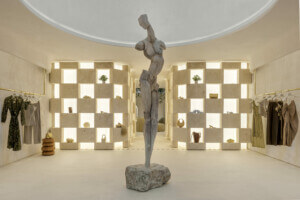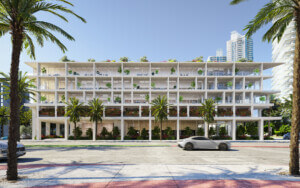We often think of collectible design as the development and sale of extravagant one-offs or limited editions that incorporate sumptuous materials. For most buyers, the acquisition of distinct furnishings, luminaires, ceramics, jewelry, and semi-functional sculptures is all about tapping into the aura of its creators, if not also helping to contextualize their already extensive art collections. Seeking to appoint their sprawling interiors with statement pieces, these patrons of sorts visit a close-knit network of dedicated galleries and annual fairs in search of new works that pique their curiosities and to establish close personal relationships with young talents. The transaction is as much about procuring a physical design as it is obtaining a part of the designer, so to speak. Much like in the art world, collectors return to their favorites time and time again. The parallels between these two markets are palpable.
And yet, collectible design is much more than just financial speculation and setting aesthetic trends. Placed apart from the worlds of contract and residential furniture, this ever-evolving scene affords its designers the time and space to experiment and explore their interests. If not immediately typecast by a specific aesthetic and style, these designers are able to test out different materials, techniques, and applications. Producing wares that are sold at a much higher price point allows them to bypass conventional constraints. A few even go so far as to employ the medium as a means of conveying conceptual messages or addressing larger social, political, and environmental issues.
Responding in kind, an increasing number of galleries have begun to fashion themselves as cultural incubators. Developing rich academic programs—whether it be talks, books, video content, or all three—these sales points are starting to rival major museums. In many respects, they’re able to foster a more immediate and grounded discourse. Ultimately, the goal is to sell works but the unique format most galleries have now adopted provides them with enough ‘extra room’ to cultivate such deliverables. The scholarship produced and the narratives communicated also help sell the work. Gallerists don’t get into this business to turn a quick profit. Rather, they do so because of a deeply rooted passion they have for this unique output; the merging of personal expression or exploration with unusual material compositions.
Fairs like the well-established Design Miami have also followed suit. In just over a decade and a half, this twice-annual event—taking place in Miami Beach and Basel, Switzerland respectively—has not only solidified itself as the central marketplace for the collectible design industry but also as an important agora for design thinking. A number of topical installations and talk series are carefully developed for each edition. Design is inherently implicit in the problematics of over-consumption, harmful production practices, and even social discrimination. Transversely, it also possesses the tools and processes by which to rectify them. Through its robust programing, the fair seeks to address this duality from various vantage points.
Helmed by the organization’s recently appointed curatorial director Wava Carpenter, this year’s Design Miami—December 1 through 5—took a more humanistic approach. Trying to make this undeniably exclusive event more inclusive was no small feat. Carpenter, her team, and the fair’s advisory board selected exhibitors that represent a broader spectrum of talent: BIPOC, women, and regionally-underrepresented practitioners that until now, haven not been given the opportunity to enter this realm. Beyond this impetus and with a particularly strong focus on contemporary work, Design Miami 2021 brought in a wider audience than it ever has. Mounted after a year and a half of cancelations and virtual events, the offering was especially exuberant. Most of the galleries and independent Curio exhibitors abided the central “Humankind” theme to a T.
“The practice of design, at its heart, has always aimed to create a better future,” says Carpenter. “But in recent years, as the global challenges that humanity faces have approached existential proportions, the future that designers envision increasingly demands a fundamental reorientation of what it means to be human in this world, calling on all of us to become better stewards of nature and of each.”
The multifaceted culture-maker has long been a proponent of this ethos. Through her creative agency Anava Projects—established with noted design writer Anna Carnick—Carpenter has spearheaded a number of socially-minded and philanthropic initiatives aimed at promoting more equity within the industry, supporting communities impacted by economic instability or natural disasters, and shedding light on different facets of the impending environmental crisis. In Carpenter’s new capacity at Design Miami and Carnick’s new role as its editor-in-chief, the dynamic duo have brought this mandate into the fold.











